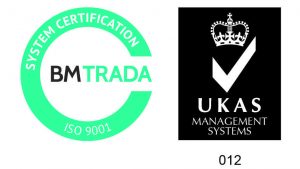Content
- Create a free account to unlock this Template
- Can You Report Minus Owner Capital on the Balance Sheet?
- Who uses a statement of stockholder equity?
- Retained Earnings
- What is Stockholders Equity?
- Interested in automating the way you get paid? GoCardless can help
- How Do the Owner’s Distributions Show in a Profit or Loss?

A company may refer to its retained earnings as its “retention ratio” or its “retained surplus.” When a company retains income instead of paying it out as a dividend to stockholders, a positive balance in the company’s retained earnings account is statement of stockholders equity created. A company often uses retained earnings to pay off debt or reinvest in the business. Stockholders’ equity represents the portion of total assets that is left to the stockholders of a corporation after all of its liabilities are paid.
In the balance sheet, the cost of treasury stock is shown as a deduction to Stockholders’ Equity. Once you define and outline this information, you’ll better understand your company’s financial wellbeing and performance, and how investors are viewing your potential. From there, you might decide to sell additional shares, streamline circulation of shares or plan the distribution of profits. Both total assets and total liabilities will be listed on the balance sheet.
Create a free account to unlock this Template
Reserves include unrealized gains and losses, appropriations, and additional paid-in capital. The capital accounts also list certain equity derivatives, which are securities that can convert into stock, such as convertible preferred shares and stock warrants. Understanding stockholders’ equity, how it works, and how it’s calculated can help investors gauge how a company is doing. However, stockholders’ equity doesn’t provide a complete picture of a company’s performance and how effectively it is managing and creating stockholders’ equity. Incorporating the stockholders’ equity figure into financial ratios can add insightful dimensions to a company evaluation. Stockholders Equity provides highly useful information when analyzing financial statements.
- But numerous components of the balance sheet calculation are needed to gain deeper insight into a company’s financial management.
- The $89 million (rounded to the nearest million) in stock would equate to 1.78 billion shares (actually reported on the balance sheet at 1.782 billion).
- Carbon Collective is the first online investment advisor 100% focused on solving climate change.
- A summary report called a statement of retained earnings is also maintained, outlining the changes in retained earnings for a specific period.
Ultimately, shareholders’ equity is used to evaluate the overall worth of a company. But numerous components of the balance sheet calculation are needed to gain deeper insight into a company’s financial management. By calculating shareholders’ equity, an investor can determine if a company has enough assets to cover its liabilities, which is an important factor in deciding whether a company is a risky or safe investment. A company lists its treasury stock as a negative number in the equity section of its balance sheet. Treasury stock can also be referred to as “treasury shares” or “reacquired stock.”
Can You Report Minus Owner Capital on the Balance Sheet?
Treasury shares can always be reissued back to stockholders for purchase when companies need to raise more capital. If a company doesn’t wish to hang on to the shares for future financing, it can choose to retire the shares. For example, suppose a company raises $20 million through the issue of one million common shares at $20 a share, each with a par value of $0.01. The paid-in elements of equity would assign $10,000 to common stock (1 million x $0.01 par) and the remainder, $19,990,000, to the additional paid-in capital account. Although shareholder equity isn’t the only factor to consider when weighing up an investment, if it’s negative, the company’s prospects are far riskier.


